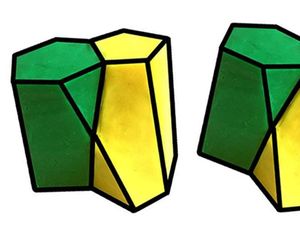Meet Scutoid – the brand new geometric shape hiding inside your body
Scientists believe the unusual structure is nature’s solution to developing complex organs.

A brand new shape previously unknown to geometry has been discovered beneath our skin cells.
Called the scutoid, scientists came across the structure while studying epithelial cells that form our skin and line our organs and blood vessels.
The researchers at The University of Seville and Seville Institute of Biomedicine (IBiS) say the structure looks more like a “twisted prism”.
They believe the shape is the result of a “solution that nature has found to fold and curve the epithelia”.
Scutoid has six sides on one end and five on the other, with a triangular surface on one of the long edges.
This unique shape helps tissue to curve, allowing organs to acquire very complex yet very stable shapes, according to the researchers.
For example, during the development of an embryo, it changes from a simple structure of a handful of cells to an animal with very complex organs.
Luisma Escudero, a faculty member at University of Seville’s biology department, said: “This process doesn’t only occur because of the growth of the organism, but also because the epithelial cells start ‘moving and joining together’ to organise themselves correctly and give the organs their final shape.”
It was previously thought the cells that make up this tissue would be prism shaped or like truncated pyramids but computer modelling suggested a new shape – which was later confirmed with cell analysis.

Mr Escudero added: “This is due to the fact that when tissue curves it tends to minimise energy, to be more stable, and for that reason our biophysical data indicates that what these cells do is adopt a scutoid shape.”
The researchers say the discovery of the scutoid could have numerous applications across different scientific fields and could be helpful in the effort to grow artificial tissue and organs in the laboratory.
The findings are published in the journal Nature Communications.





